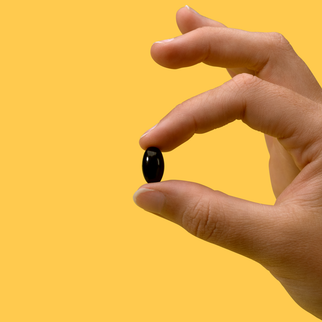The journey to health and wellness often involves challenges, and one common setback is a muscle strain — that’s especially true as our bodies continue to age. With muscle injuries, the road to recovery can vary depending on a few key factors.
When it comes to strain recovery, nutrition can play a very significant role in our muscle healing processes. Let's dive deeper into understanding muscle strains, the recovery process, and how nutrition can be an ally.
What Is a Muscle Strain and How Does It Differ From a Sprain?
Muscle strains, typically referred to as pulled muscles, occur when there's a tear in the muscle fibers. This usually results from overstretching or excess force exerted on the muscle.
Sprains, on the other hand, are slightly different. They pertain to injuries to the ligaments — the bands connecting bones at a joint. This simple distinction between muscles and ligaments defines the primary difference between strains and sprains.
In our daily lives, certain muscles are more prone to strains. The hamstring, located at the back of your thigh, is often prone to injury, especially in athletes and those leading an active lifestyle. Similarly, the lower back is a common area for strains, especially in people with sedentary lifestyles or those engaging in heavy lifting.
The degree of these injuries can range significantly. A mild strain might only result in slight discomfort, allowing you to continue your daily activities with minimal disruption. Severe strains, on the other hand, can be debilitating, leading to intense discomfort and even a visible deformity in the muscle.
How Can You Recognize a Muscle Strain?
It's essential to recognize the symptoms of muscle strain to start the proper care routine. Common symptoms include sharp pain at the site of injury, muscle soreness, swelling, and, in some cases, muscle spasms.
While a physical examination is often enough to diagnose a muscle strain, certain situations might require an X-ray. Though muscle strains won't be visible on an X-ray, it can help rule out other injuries like fractures.
Knowing your medical history is key if you suspect an injury. If you've had previous strains or a history of musculoskeletal issues, this history can help inform your doctor regarding the best course of action.
Minor strains can often be treated at home — but persistent pain, inability to move the affected area, or worsening symptoms are a sign that you should seek medical advice. Remember, timely intervention can drastically reduce recovery time and prevent complications.
What Factors Affect Muscle Strain Recovery Time?
There are several factors involved that can influence the time it takes to get back on your feet fully.
One key factor is the muscle fibers themselves, and their inherent healing process. When injured, muscle fibers start a regeneration process that involves an inflammatory response, tissue formation, and remodeling. These stages are crucial for the injured muscle to heal and regain strength.
The location of the strain can also significantly impact recovery. For instance, an injured area like the hamstring might require a more extended rest period than a strain in the forearm, primarily due to the hamstring's weight-bearing role. Similarly, a strained lower back, a critical part of your core, can affect daily functions, prolonging recovery.
The severity of the injury also plays a role. Mild strains might heal within days with minimal care, while severe muscle strains can take weeks or even months.
How Can You Ease Discomfort and Support Recovery?
Alleviating discomfort and supporting the body's natural healing process is essential after a muscle strain.
One of the most widely accepted methods is the RICE principle: rest, ice, compression, and elevation. It’s a simple acronym that serves as a reminder for the first four steps to recovery:
- Initially, resting the injured area is crucial to prevent further damage.
- Applying an ice pack to a strained muscle can soothe tension and numb the area, offering relief from muscle pain.
- Compression, using an elastic bandage, can help control swelling and provide support to the injured muscle.
- Elevating the strained muscle, especially in the initial stages, aids in reducing swelling.
Over-the-counter medications can also be instrumental in managing pain and inflammation. Nonsteroidal anti-inflammatory drugs (NSAIDs) like Ibuprofen are often recommended for their dual action. Acetaminophen can also be useful in pain management, especially for those who might be sensitive to NSAIDs.
How Do Warm-Ups and Physical Activity Influence Muscle Strains?
A proactive approach is always better than a reactive one. Regular warm-ups before physical activity prepare the soft tissue, increasing blood flow and flexibility — thereby potentially reducing the risk of strains. On the other hand, overuse without adequate rest is a leading cause of muscle injuries.
After experiencing a strain, the temptation to return to physical activity is understandable (and common). However, your reinjury risk is substantial if you jump back into things too quickly.
It's important to follow a graded exercise program from your doctor post-injury to ensure that the affected muscles are adequately healed before resuming regular activity.
Why Is Physical Therapy Important for Muscle Strain Recovery?
Physical therapy can be helpful during muscle strain recovery, especially if the strain is particularly severe.
A physical therapist is a trained professional equipped with knowledge and skills regarding sports medicine that help you regain muscle strength, flexibility, and overall function. Their expertise is not just in rehabilitation, but also in providing guidance to prevent future injuries.
For example, a physical therapy specialist might suggest enhancing your range of motion after a muscle strain. Any limitations in movement can lead to other areas of your body compensating for it, which can cause further imbalances and risks of reinjury.
A physical therapist uses various techniques, exercises, and stretches tailored to each person’s needs, ensuring that the injured muscle and surrounding structures regain their full, healthy range of motion.
In some cases, a physical therapist may refer you to an orthopedic specialist. These experts primarily deal with a branch of medicine involving the musculoskeletal system. If there is any structural damage to your bones, joints, tendons, ligaments, and muscles, then you may need their advice for proper healing.
How Can Nutrition Support Muscle Health?
At iwi life, our passion revolves around harnessing the power of nature for optimal health. Our plant-based approach emphasizes the rich nutritional value of algae.
Nutrition is a cornerstone in the recovery process, and omega-3 fatty acids play a vital role in soothing tension, supporting muscle repair, and maintaining overall wellness.
Algae-based products, like those at iwi life, offer a sustainable and rich source of nutrients — especially omega-3s. Beyond just supporting efficient muscle recovery, these products contribute to joint wellness, brain health, and a range of other physiological processes.
Sustainable nutrition is the future. As the global population grows and the demand for nutrient-rich food sources increases, algae presents a promising option, emphasizing health benefits without compromising our planet's well-being.
The Takeaway
Muscle strain treatment and recovery requires patience, understanding, and professional guidance.
Whether you use the tried-and-true RICE method, physiotherapy sessions, or consultation with an orthopedic specialist, taking the right steps based on professional guidance ensures a smoother, more effective recovery journey.
Here at iwi life, we champion sustainable nutrition, advocating for a balanced, environmentally-conscious approach to health. Consider adding iwi life supplements to your daily regimen for a well-rounded wellness routine.
Sources
Muscle Strain | Harvard Health
Muscle Injuries: A Brief Guide to Classification and Management | PMC
Muscle Strains - Symptoms and Causes | Mayo Clinic
Warm-up and Stretching in the Prevention of Muscular Injury | NIH
Physical Therapy | NCBI Bookshelf
Orthopedist: Medical Definition, Expertise & Specialties | Cleveland Clinic



















